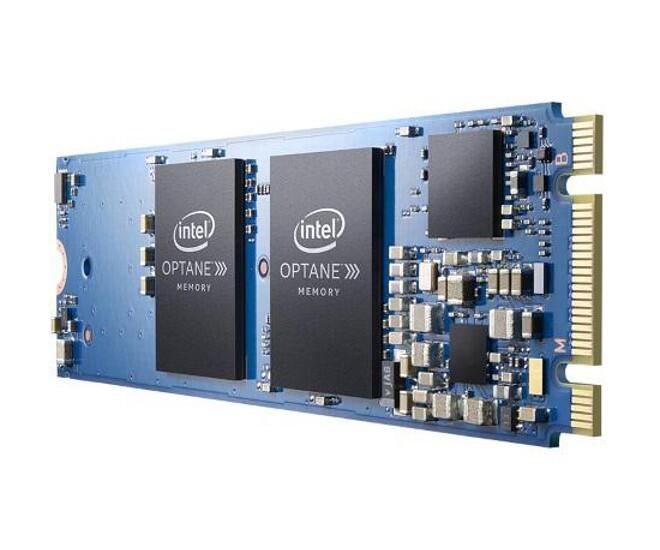Why Intel’s Optane SSD is a poor fit for PCs
Article By : Jim Handy

Given that Intel is a leading SSD supplier, it is odd that the company would work to sell a technology that would serve to undermine its SSD business.
Intel has kicked off CES with an announcement of Optane modules for the PC. These m.2-format SSDs sport a speedy PCIe/NVMe interface and use the new Intel/Micron 3D XPoint memory to provide faster performance than can be achieved using NAND flash.
Surprisingly, the web page used for the kickoff hammers on a theme: “A hard disk drive coupled with Intel Optane memory affordably gives you SSD-like speed while maintaining large storage capacity.” Given that Intel is a leading SSD supplier, it is odd that the company would work to sell a technology that would serve to undermine its SSD business.
The idea of adding an SSD layer to accelerate HDD performance is not a new one to Intel. The company tried unsuccessfully in 2011 to encourage PCs to use a similar approach with its Ultrabook initiative.
Like this week’s announcement, the Ultrabook solution paired a low-capacity SSD with a standard HDD. In the case of the Ultrabook the target capacity underwent some changes, ranging from 13GB to 20GB, a range similar to the 16GB and 32GB Optane modules being promoted today. It appears that today’s Optane product, as did the Ultrabook, takes advantage of Intel’s Rapid Storage Technology to manage the SSD cache.
The company has been working to insert a flash storage layer into PCs since its Robson/Turbo Memory initiative in 2005. Turbo Memory used Microsoft Windows Vista’s ReadyBoost and RapidStart software to manage a USB-connected flash cache.
The effort was followed by Intel’s Braidwood initiative, an aborted 2009 effort to add flash modules, roughly similar to DRAM DIMMs, to the PC’s motherboard as a configurable flash layer. It seems that both of these programs failed because of software issues.
All in all, the notion of adding a fast storage layer to the PC is a good idea from the perspective of price/performance. So far two problems have gotten in the way of its adoption in the PC: Execution, in the form of software support (which was finally solved in the Ultrabook), and marketing, where the value prospect of a costly addition to the PC was completely lost on the consumer.
This last will be a key factor with the Optane m.2 card (shown below). Optane is based on 3D XPoint memory, a new technology that is currently proving to be extremely challenging to bring to production.
![[Intel Optane 01 (cr)]](/wp-content/uploads/sites/2/2020/04/Intel_Optane_01_cr.jpg)
__Figure 1:__ *Intel showed at CES an m.2 Optane board plugging into PCs. (Source: Intel)*
In order for Optane DIMMs to make sense to the user this new memory technology must be sold for less than DRAM since its performance is lower than that of DRAM. The trouble is DRAM’s awfully cheap since it’s produced in such enormous volumes.
3D XPoint memory will cost less to manufacture than DRAM once its shipment volume approaches that of DRAM. The way to reach this shipment volume will be to sell XPoint at a lower cost than DRAM. This is a classic chicken-and-egg issue.
Another key drawback is that an Optane PCIe SSD is only 6-8 times faster than a NAND flash based PCIe SSD. The difference may sounds significant, but the Optane SSD is based on the Intel/Micron 3D XPoint memory, a technology that is claimed to be 1,000 times as fast as flash.
This huge disparity stems from the use of an SSD block storage interface to communicate with a memory technology.
Objective Analysis is not bullish on the prospects of Optane SSDs in PCs. Between the high cost that can be expected early on in the program’s life and the lack of a clear benefit to the average PC purchaser this program is likely to appeal only to enthusiasts with an unlimited budget.
On the other hand, we see a clear path to success for Optane DIMMs in servers, since 3D XPoint’s speed advantage will be unleashed by putting it on the memory bus and since the data centre has a much stronger understanding of cost/performance than does the average PC user. This is spelled out in our October 2015 report: “A Close Look at the Micron/Intel 3D XPoint Memory.”
This article first appeared on EE Times U.S.
Subscribe to Newsletter
Test Qr code text s ss


